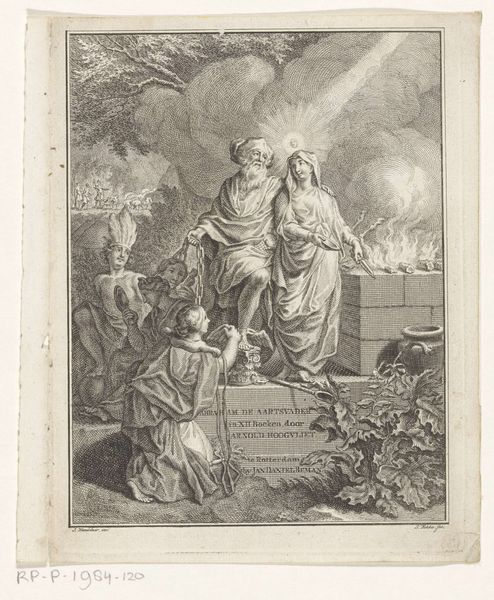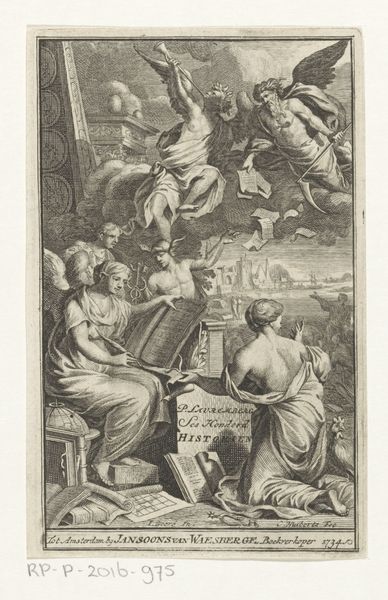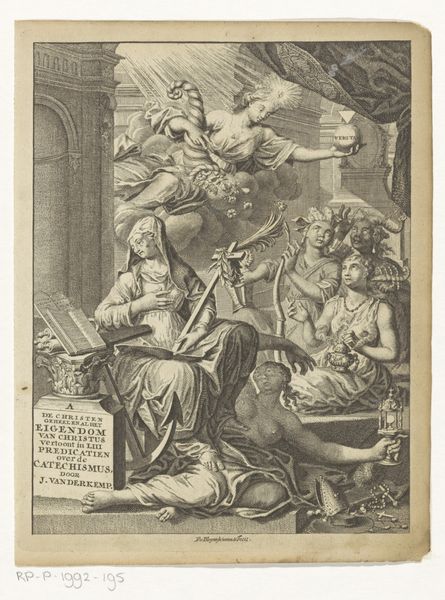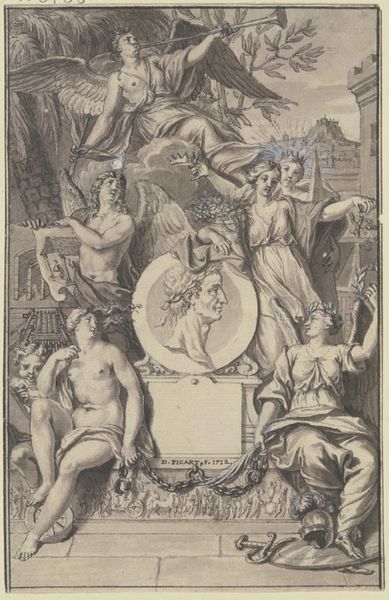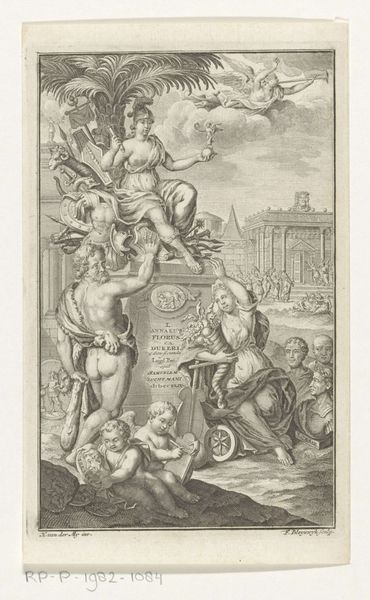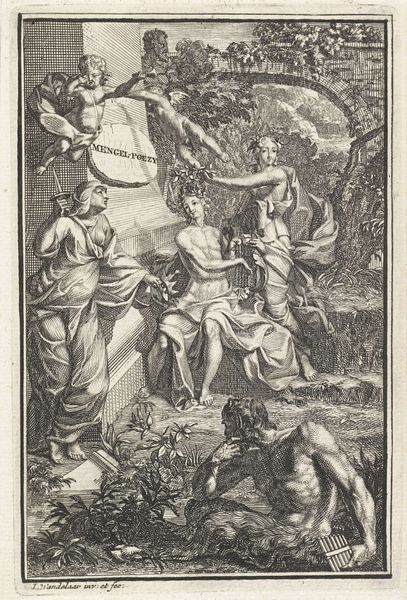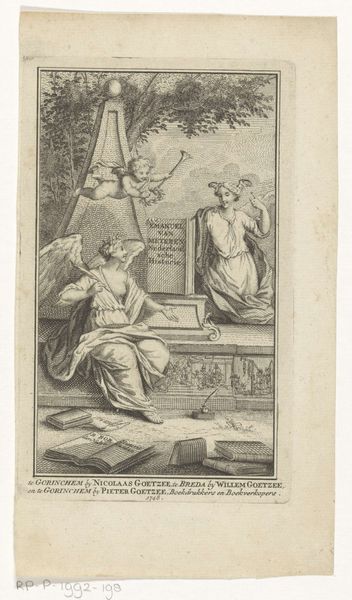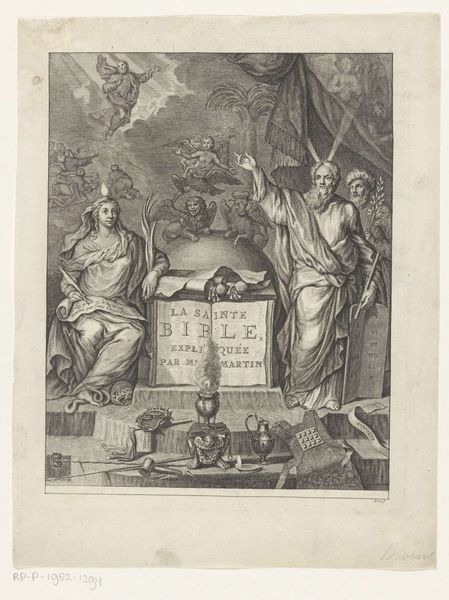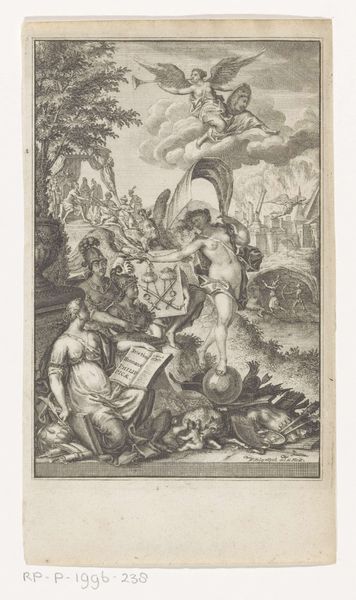
engraving
#
portrait
#
allegory
#
baroque
#
landscape
#
figuration
#
line
#
history-painting
#
engraving
Dimensions: height 145 mm, width 83 mm
Copyright: Rijks Museum: Open Domain
Curator: Look at this print! It's called "Allegorical figure with globe and signs of the zodiac" by Joseph Mulder, dating back to 1694. The work, housed here at the Rijksmuseum, utilizes engraving to portray its complex scene. Editor: It's definitely dense, visually. A lot happening. My first thought is the sheer contrast between the detail of the foreground figures and the almost sketched background. It makes me feel like it's trying to tell two stories at once. Curator: Exactly. The primary narrative centers on the allegorical figure herself. Note her confident pose atop the globe, framed by the zodiac, trumpet in hand. Then, the industrious writer below, forever capturing words...I get a sense of the power of influence across eras and the link between mortal activity and cosmic order. Editor: Yes, that industrious scribe is interesting. See how he is positioned at the base, almost like he's part of the material foundation that allows the allegorical figure and globe above to be properly displayed. But there’s labor there; we see him using his craft of penmanship, bound to the earthly surface while that figure rests comfortably atop a huge orb and elevated pedestal. How many other such unseen hands are truly responsible for keeping that aloft? Curator: That’s such a powerful question! The physical act of creation and what gets memorialized versus what doesn’t. And Mulder makes deliberate choices regarding the engraving—the pressure he applies to carve lines, the tools he chooses. You can sense him painstakingly build up this image piece by piece. It's slow, repetitive labor giving birth to symbolic freedom. Editor: And then we get to question whose story gets told here, and how labor figures. That scribe works hard, creating something that goes into the making of this art, whereas it’s that goddess on top who reaps all the glory, both literally, with that heavenly zodiac encircling her, and figuratively, for those who fail to notice the other laborers who allowed her access to her status. And there are material interests in that; how Mulder sought his subject matter through working for his patrons, no doubt. It's less timeless universality and more a reflection of societal values he served through creation. Curator: Precisely. There’s also that odd disconnect between the foreground action and that very busy background with ships at sea. Are they at war? Building? It feels unfinished, like a chaotic world always threatening to impinge. And she's there to literally survey it? Or simply dictate it to the man below to tell us about? Editor: It is chaotic, I'd have to agree. Which raises another point about the value put on his type of labor in comparison to those who actually operate and maintain such massive vessels. Perhaps these ships and the laborers aboard are mere materials within this grand narrative for the rich, used to create images that grant access to status in some way? In effect, they become symbolic instruments for artists such as Mulder, much like his engraving tools were the foundation for a narrative. Curator: Seeing how we place figures, forms, symbols—even the processes involved in the making—illuminates more than I ever initially imagined! Thank you. Editor: An allegorical world where nothing is what it initially seems! Thank *you*.
Comments
No comments
Be the first to comment and join the conversation on the ultimate creative platform.
